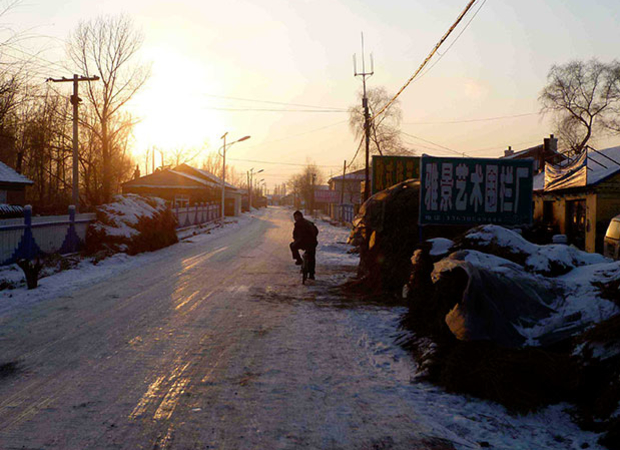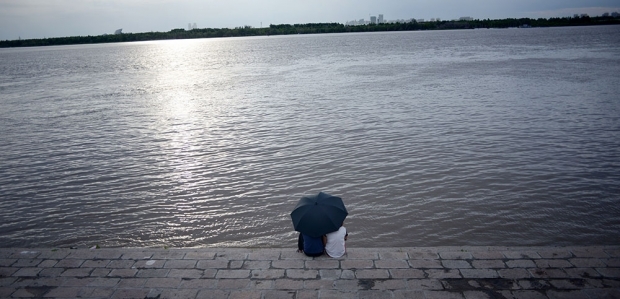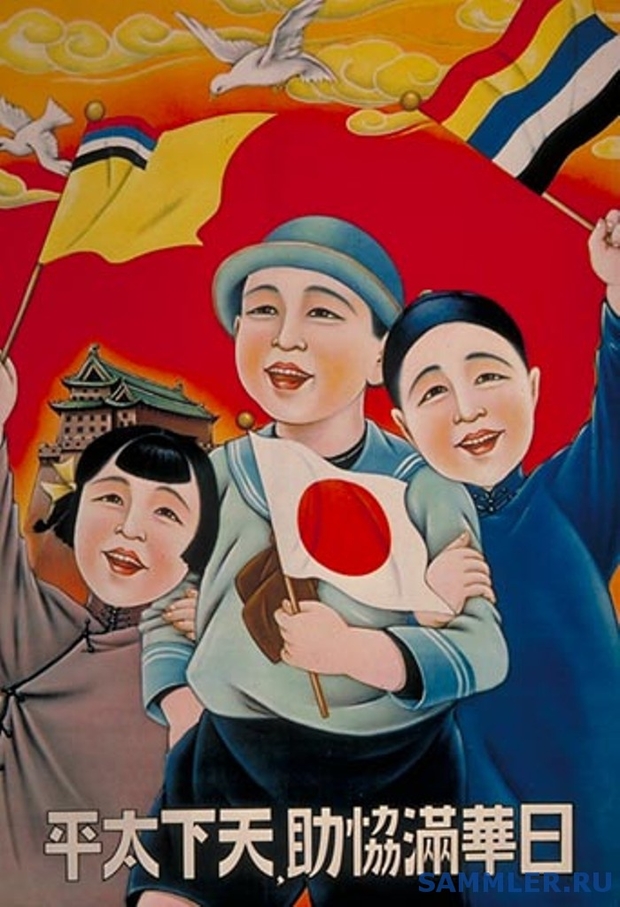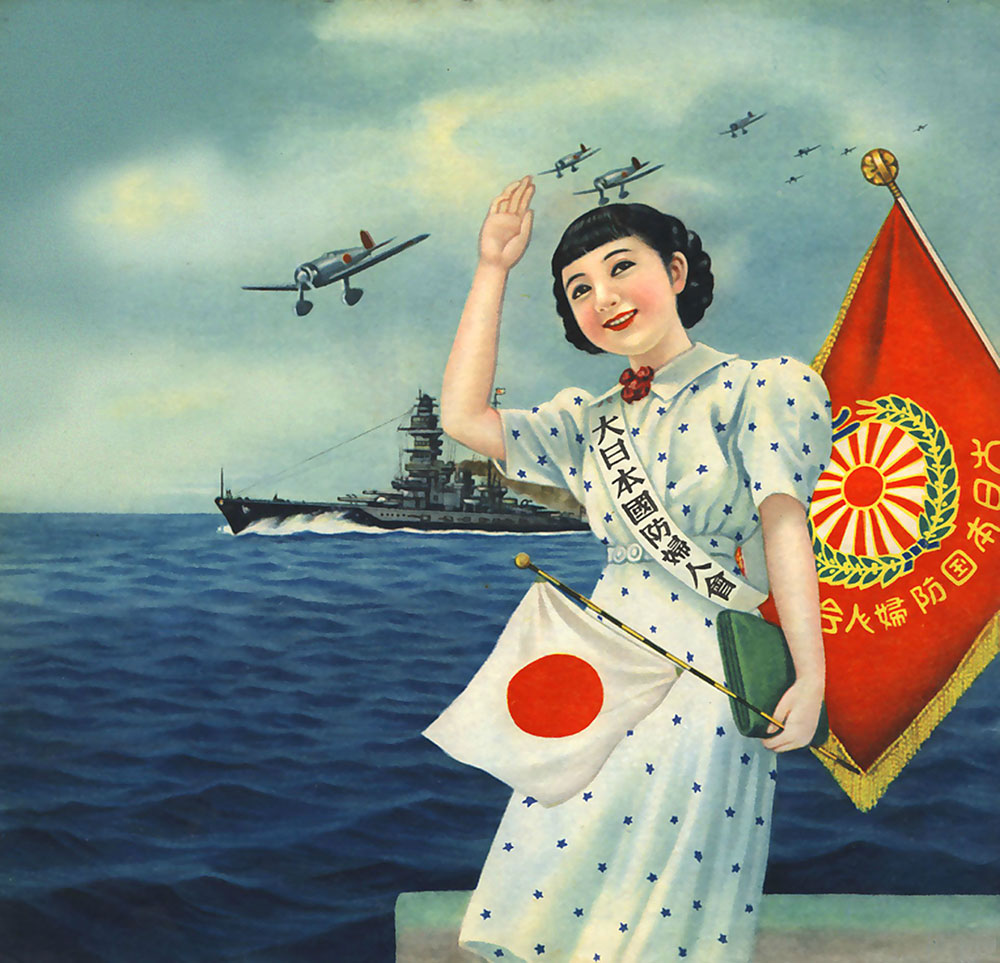Seventy years ago today, thousands of Japanese settlers—mostly women and children—found themselves trapped in an area then known as Manchuria, or Manchukuo, the name of the puppet state the Japanese military established in 1931. Abandoned by their army, 80,000 Japanese civilians died in northeast China, roughly equal to the number who perished after the United States dropped an atomic bomb on the city of Nagasaki. Now, in a small northeast China town named Fangzheng, their memory lives in a one-of-a-kind, all-but-unknown cemetery that has become Ground Zero in the battle over how China remembers its war with Japan.
Uniquely, both the Chinese and Japanese governments would rather forget this far-flung relic—the “Sino-Japanese Friendship Garden”—which feels as haunted as its origin is harrowing.
In 2011, I stood on an abandoned dock along the Songhua River, 110 miles downstream from the Heilongjiang provincial capital, Harbin. There are no plaques, no markers on the site, only rusting skiffs and oil drums. The river here is as wide as a lake, with water that looks deep and dangerous. An old man carrying a fishing pole appeared from behind a dune and asked what I was staring at. “Today’s the anniversary of the date the Japanese mothers waited here,” I said, “hoping a boat would come to pick them up.”
This is the fisherman’s village; he knew the story, even if he hadn’t yet been born. On August 10, 1945, the day after the Soviet Union declared war on Japan, the Japanese army evacuated military families from Manchurian cities, cut telegraph lines, and blew up bridges, severing settlers—mostly women in children living in remote areas—from rescue. “Their only alternative,” a Japanese general cabled, “is suicide.”
The Soviet army drew near. Mothers stared upstream and down. No boat came. Hundreds of Japanese women placed their children—some of them just infants—on these docks, stepped off into the current, and disappeared.
* * *
Although they made up only 17 percent of the 1.5 million Japanese living in its puppet state “Manchukuo,” settlers accounted for nearly half its death toll. They had been enticed here by the “Millions to Manchuria” campaign begun in 1936, when Japan’s farms faced stagnation amid a nationwide recession due, in part, to the American embargo. “Go! Go and colonize the continent!” propaganda posters urged Japanese. “A new land awaits the village youth.”
“The Joy of Becoming a Progenitor,” a colonization manual aimed at men, trumpeted “What could be better than creating a new country and of becoming the founding fathers to that country?” Women were given pamphlets titled “The Joy of Breeding.” A 1941 journal promised, “If you become a Manchurian pioneer, you can be an owner-farmer, and you will see permanent prosperity for your descendants. There is no way to revive the [home] villages other than developing Manchuria.”
Under the plan, Japanese villages would be replicated in a puppet state it called Manchukuo, with branch family members—second and third sons—sent to pioneer a satellite outpost sharing the same name as their home village. Unbeknownst to settlers, the majority of these villages were hotbeds of guerrilla warfare, or along the Soviet border, with farming land seized from natives, who came to call them “exploitation regiments.” Photos show Japanese soldiers teaching newly arrived women, infants lashed to their backs, how to fire the single-bolt rifle each household was issued on landing.
A Japanese writer recorded that when the “pioneer settlers” left for Manchuria, children waved flags, and “the villagers let go of the handkerchiefs and shouted banzai, throwing both hands up in the air” as tears streamed down their cheeks. As their train pulled away from their Japanese home, some of the settlers heard a farewell song that went:
The pioneers of our great Japan
We divided the village and went to Manchuria
To build the paradise of the imperial way
We will all march together
Many of the settlers who woke on August 10, 1945, would not survive the fall of Manchukuo. Many committed suicide, together.
* * *
I stood on the abandoned river docks, watching my shadow flicker over the fast, muddy current. It was August, and the prairie sky stretched blue to the horizon. If a local retired schoolteacher has his way, one day this sunny spot will be shaded by umbrella-toting tour groups, reading historical markers about the suicides. “What occurred here reflects the essence of civilian victims of war,” said the retired teacher, who asked to remain anonymous because of the sensitivity of the issue. “Preserving this place can only help the healthy development of Sino-Japanese relations.”
Chinese officials replied to his request: “In present circumstances, the plaques are impossible to approve.” But, the teacher noted optimistically, “circumstances change.”
He pointed to the area’s other wartime relic as evidence. I followed the one-lane dirt road that winds through a run-down hamlet of redbrick homes and under a new expressway. Four miles from the riverbank, at the end of a dead-end street, stands a gated grove of birch and pines. It is the only memorial of its kind. The characters on the entrance gate read: Sino-Japanese Friendship Garden.
Culture
02.04.15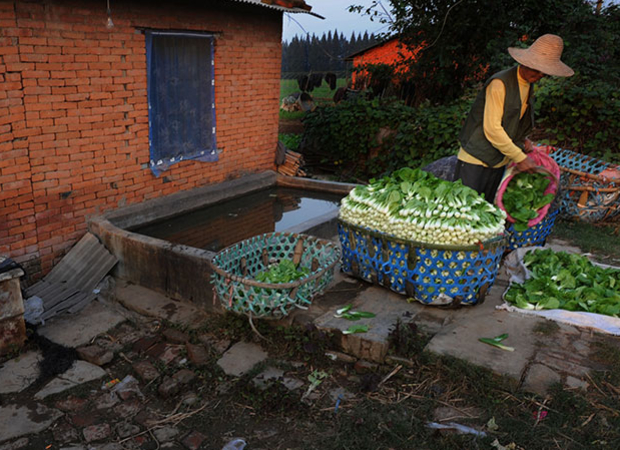
‘This is not that China Story’
An estimated 10,000 Japanese settlers had lived in the area around this cemetery, in a county called Fangzheng. Of the 3,420 survivors, 2,300 women—facing no other choice—married local men, and 1,120 children—including those left on the riverbank—were adopted by local families. Their legacy is still seen on the streets of Fangzheng town, where shop signs display Chinese and Japanese characters, and there are more Japanese-language tutoring centers than ones teaching English. According to the county government, one-fifth of its 230,000 residents have lived or worked in Japan. For years, descendants of Japanese settlers made annual pilgrimages here each August, during Obon, the grave-sweeping festival.
The cemetery’s roots date to 1963, when a Japanese “remaining wife,” as women who married Chinese men were called, struck bones while plowing a field. An excavation unearthed the remains of roughly 4,500 refugees who had died from suicide or starvation. For three days, on a gasoline-fueled fire, locals cremated their remains. Even though the war caused 14 to 20 million Chinese deaths, in 1963 a monument sanctioned by Premier Zhou Enlai was erected at the tomb containing their ashes. “The people of Japan and the settlers,” Zhou said, “were also victims of Japanese imperialism.” (Thirty thousand settlers still remained in China when it normalized diplomatic relations with Japan in 1972. Most returned, aged and adrift in a modern Japan eager to forget them.)
Amazingly, given that Red Guards—youth bent on destroying “old customs, culture, habits and ideas”—smashed foreign graves across China, and even the tomb of Confucius, the Japanese cemetery remained intact through the decade-long period of chaos known as the Cultural Revolution. In order to make way for a reservoir, the graveyard was moved to its present site in the 1980s. In 1984, the remains of 500 settlers who committed suicide before the Soviet army overran them in a nearby town were moved here, as well.
Viewpoint
09.02.14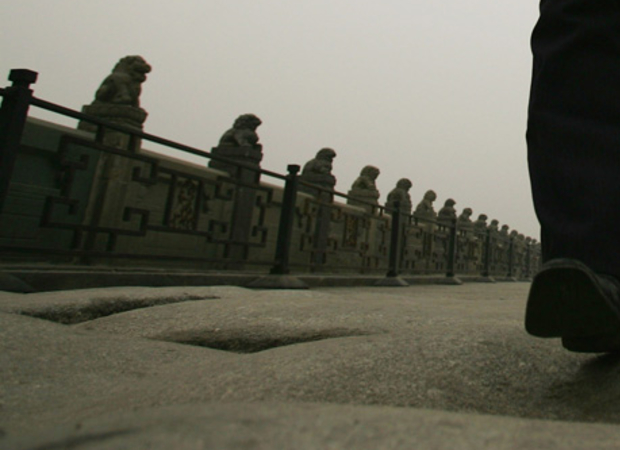
The Danger of China’s ‘Chosen Trauma’
The Sino-Japanese Friendship Garden cemetery also holds the remains of Chinese families who had adopted Japanese orphans. A Japanese officer, expressing guilt for the children left behind, wrote that “the Chinese raised the children of the burglars who had robbed them.” [But in interview after interview, the foster mothers said that the babies were just like they had been: powerless.
Their charity is enshrined in pavilions painted with images of the Great Wall and Mount Fuji. Cement walkways lead through the pine grove to two low concrete domes entombing the ashes of the dead. Origami cranes—their silk ribbons wishing, in Japanese and Chinese, for everlasting peace—decorate the pines’ lowest boughs, left by Japanese visitors. “We have to ask them not to plant any more trees or we’ll have to expand the cemetery,” the live-in caretaker told me.
It is a lovely, peaceful place, silent but for the magpies. The feng shui is sound: sloped cornfields shield the tombs from the malevolent northern wind, and they face water-filled paddies below.
The NYRB China Archive
05.22.14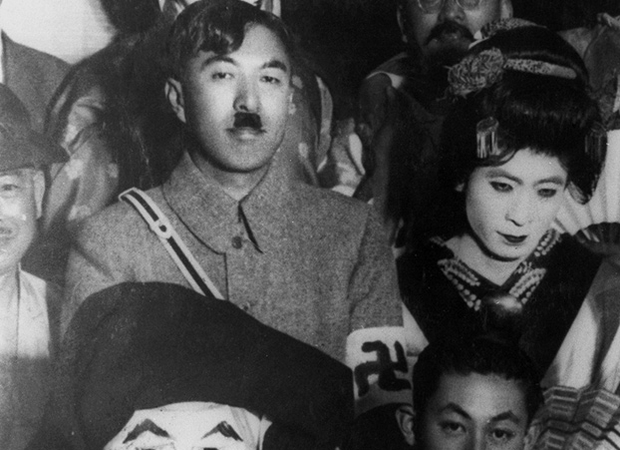
The Smooth Path to Pearl Harbor
from New York Review of BooksI came to meet a group of descendants traveling from Japan for the grave-sweeping festival. But the war did not end in 1945. In 2011, five Chinese nationalists who met online arrived at the cemetery carrying hammers and a bucket of red paint. Their target: a newly erected monument listing the names of 229 Japanese settlers who died in Fangzheng. The men crossed the names out with red brushstrokes and chipped the stone with hammers. Internet chat rooms spread the news; within hours a bulldozer plowed the monument’s rubble into a pit. The Japanese grave sweepers canceled their trip. “Our economy profits thanks to people who went to Japan from our county,” a local shop owner said, “and I support promoting friendship between China and Japan. But some people criticize residents of our county as if they were traitors.”
In July 2015, the cemetery was temporarily reopened to receive a group of 54 orphans since repatriated to Japan. Chinese media reported that the children paid respects at the tomb holding the cremated ashes of their adoptive parents. “I thank them and all Chinese for giving me a life,” one Japanese woman said. There was no mention of the neighboring tomb, the final resting place of their mothers forgotten here, seventy years ago.
Excerpts
01.28.15